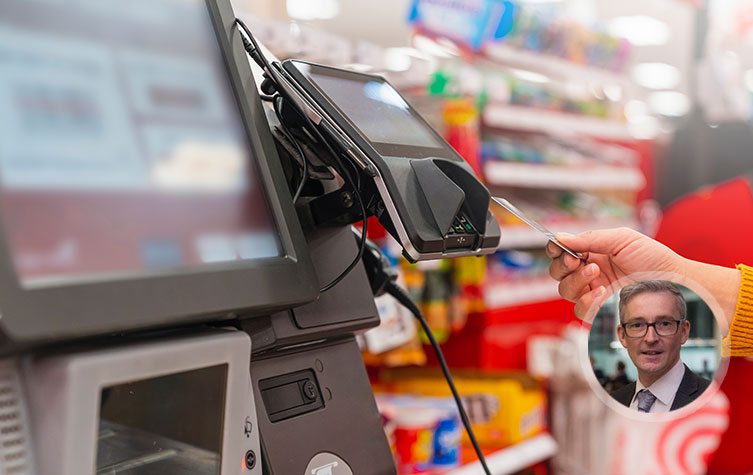The Retail support gap: adapting to a new era of customer expectations
Technology has had a profound impact in shaping society over the last 15 years. Powering digital services such as social media, online streaming, and ultra-fast order delivery, it’s redefining customers’ expectations of convenience, immediacy, and availability, influencing customer behaviour on the high street.
To meet evolving customer expectations, the retail and hospitality sectors have significantly invested in technology transformation. From new localised store outlets and drive-thru capabilities to enhanced order collection, rapid delivery services, and an expanding range of self-service, ordering, and mobile payment channels – customers are now offered greater choice and convenience. At the same time, rising cost pressures, the need to optimise operations, and ongoing labour shortages have made technology a critical enabler of efficiency – central to the transformation of retail and hospitality in meeting today’s customer expectations.
Yet, while retail technology has evolved to meet these new demands, traditional store support and maintenance services have remained largely unchanged. The problem? These services are reactive by design and introduce delays and friction when things go wrong. They were designed for an era before self-service and complex digital sales channels. A time when in-store colleagues handled transactions and could troubleshoot technology issues with the service desk and support the customer in completing the sale.
In today’s transformed retail and hospitality environments, customers expect a fast, seamless experience when choosing to self-serve – they have little tolerance for slow responses and failures. When technology isn’t working, sales are lost, and customers walk away frustrated. Issues routinely go unreported, as customers simply abandon their purchase and leave the store – allowing problems to continue affecting customers, staff, and operations.
Inconvenient truth - The cost of downtime in a self-service world
Picture this: You’re at a fast-food restaurant, ready to order via a self-service kiosk, but the screen is frozen as you complete your order. You’re in a hurry. You may choose to wait or try another kiosk, but if that fails too, you’re unlikely to hang around. This may be a familiar scenario to you, and I expect you simply went somewhere else – but I doubt you reported the issue. It’s not your problem, right? In the past, employees reported issues to IT support. Today, customers don’t; they just leave.
Traditional store support models are reactive, built on manual systematic diagnostic processes that operate under outdated service-level agreements (SLAs), and rely on costly OEM maintainers that can take days to restore systems – entirely at odds with today’s fast-moving retail environment where availability is measured in seconds not hours. To keep customers engaged and operations running smoothly, retailers must shift from traditional reactive support and maintenance models to predictive ‘Always-On’ support models powered by AI and automation – designed to monitor, detect and respond to issues before they impact the customer experience and disrupt store operations.
Keeping pace with the demands of modern retail requires a fundamental rethink of how systems are delivered, supported, and resources orchestrated – powered by technology, strengthened through collaborative partnerships, and delivered by sustainable and cost-efficient methods.
AI-enabled operations and automation for always-on availability
The application of AI and automation – embedded and scaled across enterprise operations – is redefining what ‘Always-On’ service and support really means. It moves beyond traditional reactive models toward predictive and agentive support – capable of detecting even the slightest degradation in transaction performance or system stability, diagnosing and isolating the cause, and automating recovery before customer experience and retail operations are impacted.
New ways of working - collaborative partnerships to benefit store operations
The development of collaborative partnerships between technology and facilities management (FM) teams, and the integration of partner systems and tooling, are introducing new ways of working to replace traditional OEM field maintenance support services that are no longer fit for purpose and are expensive to operate.
These new ways of working extend systems, training, and support to regional and site-based facilities management teams, enabling skilled technicians to recover systems quickly and efficiently by replacing parts, guided by the IT partner. This improves recovery times from days to minutes, reducing the number of engineers working in the store, cutting store disruption and freeing staff to serve customers, significantly reducing the cost to serve.
A sustainable, cost-efficient support model
Balancing the responsibilities of corporate sustainability commitments and financial stewardship without adversely impacting operations is a challenge for many organisations. However, through the adoption of AI-enabled automated operations and the introduction of new ways of working to deliver in-store maintenance and support, organisations can achieve this balance and benefit from:
- Reducing demand for the service through AI and automation, operating costs can be reduced and the availability of customer sales channels improved.
- Introducing new ways of working removes duplication in store engineering teams and significantly lowers the cost of delivering field support and maintenance.
- Using regional and site-based technicians reduces the miles travelled, lowering the service's carbon footprint.
- Adopting energy-efficient carriers to manage parts replenishment and logistics reduces Scope 3 emissions and offers a more responsive service at a lower cost to serve.
Meeting customer expectations – the business case for change
Retail and Hospitality organisations that adopt AI and Automation and work with partners that embrace new ways of working will benefit from:
- Significantly improved channel availability and performance that will translate to enhanced customer experiences.
- A reduction in store disruption that will release colleague hours to focus on serving customers.
- Reduced support costs by up to 30%, enabling organisations to redirect this saving into pay and promotion.
- Lower Scope 3 emissions, contributing to corporate sustainability targets.
For retailers navigating today’s cost pressures and evolving customer expectations, this shift isn’t just about technology – it’s about rethinking how technology is supported to create a seamless, efficient, and sustainable retail experience.
Now is the time to embrace New Ways of Working – because, in modern retail, every second counts.
Discover how our AI-driven, automation-enhanced approach can transform your store support model. Contact us today to find out how AI-powered support can transform your stores.
Contact us today to find out how AI-powered support can transform your stores.

Written by
David Nicholls
CTO, Retail and Hospitality at Fujitsu

